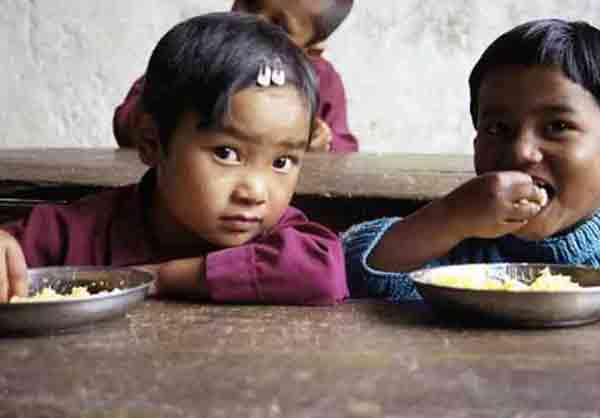
Photo: Times Now News
New Delhi, India (BBN) – The Food and Agriculture Organisation (FAO) celebrates World Food Day each year on 16th October. The event is celebrated across the globe by several organisations which are concerned about food security and sustainability.
The main reason behind initiating and celebrating World Food Day (WFD) is to raise worldwide awareness and action for those who suffer from hunger and for the need to ensure food security and nutritious diets for all, reports TIMESNOWNEWS.com.
It is also a day to celebrate the progress already made towards reaching Zero Hunger. The Sustainable Development Goals aim to end all forms of hunger and malnutrition by 2030, making sure all people, especially children and the more vulnerable, have access to sufficient and nutritious food all year round.
Zero Hunger is one of 17 Global Goals that make up the 2030 Agenda for Sustainable Development.
As per the latest FAO data, about 800 million people in the world suffer from hunger (out of 7.6 billion – as of October 2017), that is one in nine people, and 60% of them are women.
It is said that hunger kills more people every year than malaria, tuberculosis and AIDS combined. While global hunger appears to be on the rise affecting about 11% of the world population, FAO data revealed that the number of undernourished people on the planet has also increased to 815 million in 2016, up from 777 million in 2015.
INDIA’S HUNGER PROBLEM WORSE THAN NEPAL, BANGLADESH
Perhaps, India’s hunger situation is worsening with the county slipping from 97th spot in 2016 to 100th position in the latest global hunger list. The 2017 Global Hunger Index (GHI) released by the International Food Policy Research Institute (IFPRI) last week termed India’s hunger levels a ‘serious’ problem at hand. The report revealed that India’s hunger crisis is worse than all its neighbouring countries, except Pakistan. Read: India ranks 100 among 119 countries, down 45 positions since 2014
INDIA’S HAS WORLD’S HIGHEST NUMBER OF UNDERWEIGHT CHILDREN
India is also home to 97 million – of 192 million – of the world’s moderately or severely underweight children and adolescents. A recent study led by Imperial College London in the UK and the World Health Organisation (WHO) found that 22.7 per cent of girls and 30.7 per cent of boys in India were moderately or severely underweight in 2016 as compared to 24.4 per cent and 39.3 per cent underweight in 1975. The latest figures indicate that India has the highest number of moderately and severely underweight children and adolescents in the world.
Of Indian children under five, one in three (35.7%) is underweight, one in three (38.4%) is stunted and one in five (21%) is wasted, according to 2015-16 National Family Health Survey (NFHS).
Also, most recent available estimates show that in some developing countries, including India, nearly half of children under five years of age die each year due to poor nutrition.
It has been reported that over 60 crore people, or about 46% of the Indian population, also suffer from nutritional deficiencies, making it as the leading devastating health condition that affects most Indians. This clearly shows malnutrition is one main area which requires greater attention as the country seeks to fulfill its economic and social development goals. This is so crucial because deficiencies in nutrition inflict long-term damage to both individuals and society.
The fact is that hunger and malnutrition lead to severe health problems, including anaemia – which affects 72% of infants and 52% of married women. Data on anaemia show that 56% of young girls and 30% of young boys in the age group of 15-19 years are anaemic in India.
GOVERNMENT’S EFFORTS TO COMBAT MALNUTRITION
To combat or reduce the growth rate of malnutrition, the government of India has launched several programmes, such as Integrated Child Development Services (ICDS), National Children’s Fund (NCF), National Health Mission, Midday meal scheme in Indian schools, etc.
The National Food Security Act 2013 is one such effort that aims to address the hunger and nutrition challenge by ensuring greater access to adequate quantity of quality food at affordable prices. Also, a number of steps are being taken towards universal food fortification to improve nutritional content in food products.
Currently, the Indian government is also working to solve malnutrition problem by improving sanitation, which is another biggest reason for country’s malnutrition. Poor sanitation situation has pushed more children in India than North Korea, Sudan and Somalia to be exposed to bacteria, thereby impacting their health to a large extent. The government aims to make India open defecation-free by 2019.
An outline of India’s malnutrition situation shows that there are numerous factors responsible for it – both directly and indirectly. Some prominent factors contributing to the high prevalence of malnutrition include – poverty, unemployment, lack of education, lack of access to nutritious food and safe water, poor sanitation, unhealthy lifestyle, poor funds, non-availability of reliable and timely data, etc.
In addition to taking steps that will ensure food security through increased production of food grains, proper implementation of government nutrition schemes and promoting awareness of the nutritive value and eating practices among the public are crucial to combating hunger and malnutrition in India.
BNN/MMI/ANS








